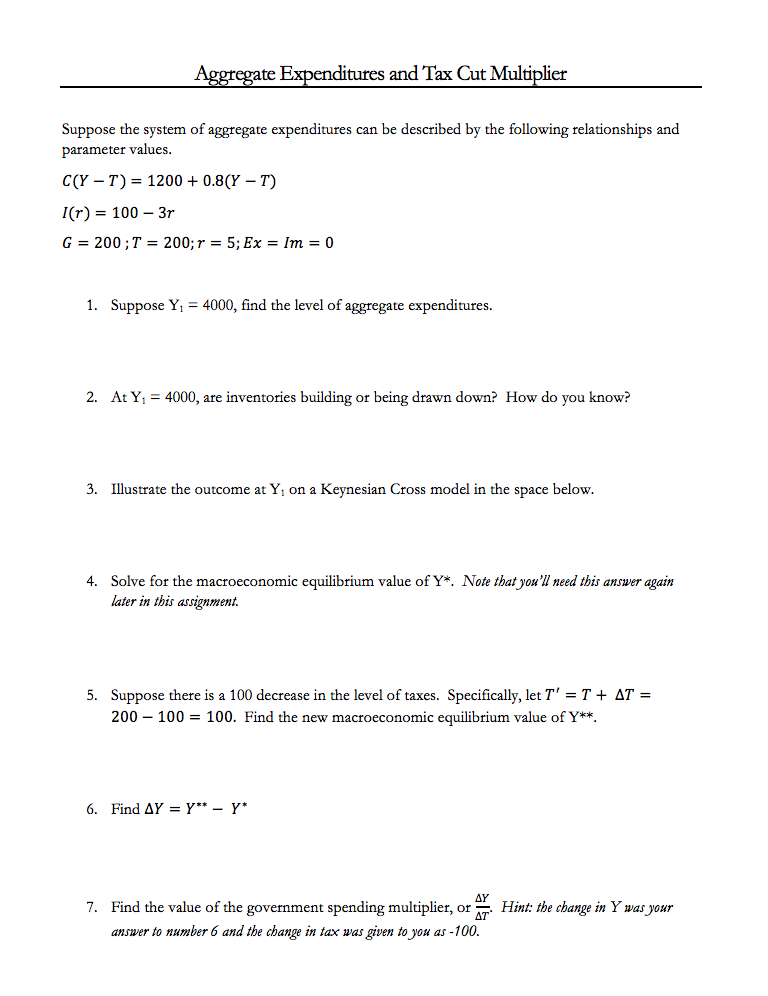Aggregate Expenditures and Tax Cut Multiplier Suppose the system of aggregate expenditures can be described by the following relationships and parameter values. C(Y – T) = 1200 + 0.8(Y – T) I(r) = 100 – 3r G = 200;T = 200;r = 5; Ex = Im = 0 1. Suppose Y, = 4000, find the level of aggregate expenditures. %3D 2. At Y; = 4000, are inventories building or being drawn down? How do you know? 3. Illustrate the outcome at Y; on a Keynesian Cross model in the space below.
Aggregate Expenditures and Tax Cut Multiplier Suppose the system of aggregate expenditures can be described by the following relationships and parameter values. C(Y – T) = 1200 + 0.8(Y – T) I(r) = 100 – 3r G = 200;T = 200;r = 5; Ex = Im = 0 1. Suppose Y, = 4000, find the level of aggregate expenditures. %3D 2. At Y; = 4000, are inventories building or being drawn down? How do you know? 3. Illustrate the outcome at Y; on a Keynesian Cross model in the space below.
Chapter9: Demand-side Equilibrium: Unemployment Or Inflation?
Section9.A: The Simple Algebra Of Income Determination And The Multiplier
Problem 4TY
Related questions
Question
Questions attached below

Transcribed Image Text:Aggregate Expenditures and Tax Cut Multiplier
Suppose the system of aggregate expenditures can be described by the following relationships and
parameter values.
C(Y – T) = 1200 + 0.8(Y – T)
I(r) = 100 – 3r
G = 200 ;T = 200;r = 5; Ex = Im = 0
1. Suppose Y1 = 4000, find the level of aggregate expenditures.
2. At Y, = 4000, are inventories building or being drawn down? How do you know?
3. Illustrate the outcome at Y, on a Keynesian Cross model in the space below.
4. Solve for the macroeconomic equilibrium value of Y*. Note that you'll need this answer again
later in this assignment.
5. Suppose there is a 100 decrease in the level of taxes. Specifically, let T' = T + AT =
200 – 100 = 100. Find the new macroeconomic equilibrium value of Y**.
6. Find AY = Y** – Y*
7. Find the value of the government spending multiplier, or Hint: the change in Y was your
answer to number 6 and the change in tax was given to you as -100.
Expert Solution
This question has been solved!
Explore an expertly crafted, step-by-step solution for a thorough understanding of key concepts.
Step by step
Solved in 5 steps with 1 images

Knowledge Booster
Learn more about
Need a deep-dive on the concept behind this application? Look no further. Learn more about this topic, economics and related others by exploring similar questions and additional content below.Recommended textbooks for you



